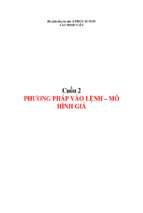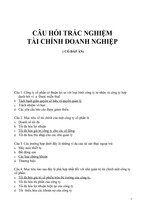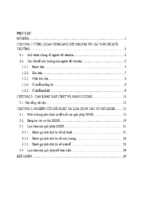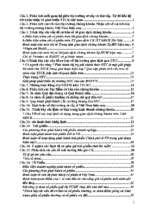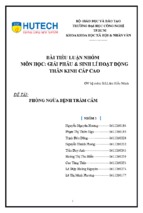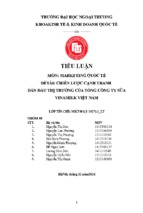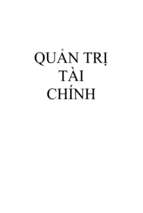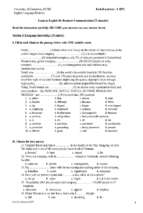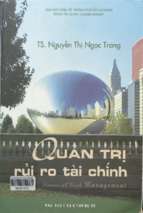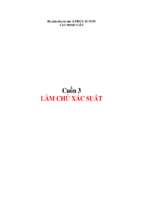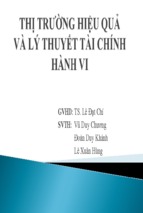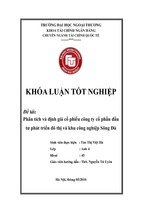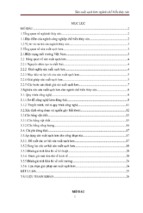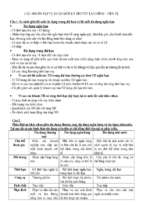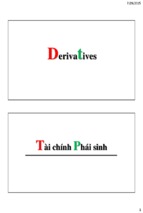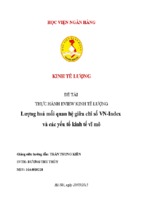DO INVESTMENT-CASH FLOW SENSITIVITIES PROVIDE
USEFUL MEASURES OF FINANCING CONSTRAINTS?*
STEVEN N. KAPLAN AND LUIGI ZINGAL ES
No. This paper investigates the relationship between nancing constraints
and investment-cash ow sensitivities by analyzing the rms identied by Fazzari, Hubbard, and Petersen as having unusually high investment-cash ow sensitivities. We nd that rms that appear less nancially constrained exhibit
signicantly greater sensitivities than rms that appear more nancially constrained. We nd this pattern for the entire sample period, subperiods, and individual years. These results (and simple theoretical arguments) suggest that
higher sensitivities cannot be interpreted as evidence that rms are more nancially constrained. These ndings call into question the interpretation of most
previous research that uses this methodology.
“Our nancial position is sound . . . Most of the company’s funds are
generated by operations and these funds grew at an average annual
rate of 29% [over the past 3 years]. Throughout the company’s history
this self-nancing concept has not been a constraint on the company’s growth. With recent growth restrained by depressed economic
conditions, the company’s net cash position has grown substantially”
[Hewlett-Packard 1982 Annual Report].
A large nance and macroeconomics literature studies the
relation between corporate investment and cash ow to test for
the presence and importance of nancing constraints. Beginning
with “Financing Constraints and Corporate Investment” by Fazzari, Hubbard, and Petersen [1988], (hereinafter FHP [1988]),
these studies divide a sample of rms according to an a priori
measure of nancing constraints and compare the investment*Previous versions of this paper [Kaplan and Zingales 1995] circulated under
the title “Do Financing Constraints Explain Why Investment Is Correlated with
Cash Flow?” Benjamin Bridgman and Violet Law provided excellent research assistance. Comments from Charles Calomiris, John Cochrane, Zsuzsanna Fluck,
Robert Gertner, David Gross, R. Glenn Hubbard, Bengt Holmstrom, Anil Kashyap, Owen Lamont, Stewart Myers, Walter Novaes, Bruce Petersen, Raghuram
Rajan, Andrei Shleifer, Amy Sweeney, Sheridan Titman, Robert Vishny, and especially David Scharfstein and Jeremy Stein (the referees) were very helpful. Seminar participants at Boston College, the CEPR Summer Symposium in Financial
Markets in Gerzensee, the Federal Reserve Board, Harvard Business School, Indiana University, Massachusetts Institute of Technology, the NBER Summer Institute, the University of California at Los Angeles, the University of Chicago,
the University of Southern California, the University of Texas, the University of
Washington, and the Nobel Symposium on Law and Finance also provided useful
comments. We also thank Bruce Petersen for providing a list of sample companies.
This research has been supported by the Center For Research in Security Prices
and by the Olin Foundation through grants to the Center for the Study of the
Economy and the State. Address correspondence to Graduate School of Business,
University of Chicago, 1101 East 58th Street, Chicago, IL 60637.
q 1997 by the President and Fellows of Harvard College and the Massachusetts Institute
of Technology.
The Quarterly Journal of Economics, February 1997.
170
QUARTERLY JOURNAL OF ECONOMICS
cash ow sensitivities of the different subsamples. The studies
interpret a greater investment-cash ow sensitivity for rms considered more likely to face a larger wedge between the internal
and the external cost of funds as evidence that the rms are indeed constrained. This methodology has been widely applied to
identify rms that are more affected by nancing constraints,
and institutions that are more likely to alleviate those constraints. For example, Hoshi, Kashyap, and Scharfstein [1991]
nd that investment by Japanese rms that belong to a keiretsu
(corporate group) is less sensitive to cash ow than investment by
independent rms. They conclude that a group (and concomitant
bank) afliation alleviates underinvestment problems caused by
capital market imperfections.
Despite the size and policy-importance of this literature, the
fundamental assumptions underlying it have remained largely
unexplored. While subsequent work has replicated the ndings
of FHP [1988] by using different a priori criteria, no paper (of
which we are aware) has veried directly whether a higher
investment-cash ow sensitivity is related to nancing problems
and, if it is, in what way. In particular, there is no test of the
fundamental assumption—implicit in all these tests—that
investment-cash ow sensitivities increase monotonically with
the degree of nancing constraints. As we show in Section I, this
is particularly surprising because there is no strong theoretical
reason to expect a monotonic relationship.
This paper investigates the relation between investmentcash ow sensitivities and nancing constraints by undertaking
an in-depth analysis of a sample of rms exhibiting an unusually
high sensitivity of investment to cash ow. These rms are the
49 low dividend rms that FHP [1988] identify as nancially constrained according to the investment-cash ow criterion.
By using detailed and previously unexplored data sources,
we try to determine the availability of and the demand for funds
for each of the sample rms. We examine each rm’s annual
report or 10-K for each sample year, and we read management’s
discussion of liquidity that describes the rm’s future needs for
funds and the sources it plans to use to meet those needs. We
integrate this information with quantitative data and with public
news to derive as complete a picture as possible of the availability
of internal and external funds for each rm as well as each rm’s
demand for funds. On this basis we rank the extent to which the
sample rms are nancially constrained each year. We use the
INVESTMENT-CASH FLOW SENSITIVITIES
171
rm-year classications to group the sample rms over seven- or
eight-year subperiods, and over the entire sample period. Finally,
we compare investment-cash ow sensitivities across the different groups of rms for the entire sample period, for subperiods,
and for individual years.
Surprisingly, we nd that in only 15 percent of rm-years is
there some question as to a rm’s ability to access internal or
external funds to increase investment. In 85 percent of rm-years
the rms could have increased their investment—in many cases,
substantially—if they had so chosen. In fact, almost 40 percent of
the sample rms, including Hewlett-Packard (cited above), could
have increased their investment in every year of the sample period. Our partially qualitative measures of nancial constraints
are strongly corroborated by quantitive data on debt to total capital, interest coverage, the presence of restrictions on dividends,
and nancial slack (the level of cash and unused line of credit
relative to investment).
More strikingly, those rms classied as less nancially
constrained exhibit a signicantly greater investment-cash ow
sensitivity than those rms classied as more nancially constrained. We nd this pattern for the entire sample period, for
subperiods, and for individual years. This pattern is also robust
to different criteria to divide constrained and unconstrained
rms. For example, rms with healthy interest coverage in every
sample year or in every subperiod year have investment-cash
ow sensitivities twice as large as the remaining rms in the
sample.
As we explain in Section I, these results should not be very
surprising. There is no strong theoretical reason for investmentcash ow sensitivities to increase monotonically with the degree
of nancing constraints. Nevertheless, we consider several possible reasons why estimated investment-cash ow sensitivities
could decrease in the degree of nancing constraints even if the
true relationship is increasing.
First, cash ow may act as a proxy for investment opportunities not captured by Tobin’s Q and do so differentially across
rms. Our results, however, are robust to the use of an Euler
equation test [Bond and Meghir 1994], which does not rely on
Tobin’s Q and thus is not affected by its mismeasurement.
Second, differences in sensitivities might be driven by a few
inuential outliers. We nd evidence that the high overall sensitivity of our sample (FHP’s [1988] low dividend payout rms) rela-
172
QUARTERLY JOURNAL OF ECONOMICS
tive to FHP’s higher dividend payout rms is explained by a relatively few company-years characterized by exceptionally high
sales growth. We also nd, however, that these outliers do not
explain our cross-section results that the least constrained rms
have the highest sensitivities.
Third, our nding of nonmonotonic relationship may be specic to a few distressed rms that are forced to use cash ow to
repay their debt, and may not apply to more “normal” samples.
The nancial conditions of the constrained rms, though, are not
consistent with this hypothesis.
In sum, we provide both theoretical reasons and empirical
evidence that a greater sensitivity of investment to cash ow is
not a reliable measure of the differential cost between internal
and external nance. In so doing, we address (and refute) the
criticisms in Fazzari, Hubbard, and Petersen [1996] [FHP 1996].
We conclude the paper with a discussion of the generality
of our results. We argue that our analysis calls into question
the interpretation of most previous research that uses this
methodology.
The paper proceeds as follows. Section I presents the theoretical framework. Section II describes the sample. Section III explains the criteria used to identify the extent to which rms are
nancially constrained. Section IV reports the investment-cash
ow regression results. Section V discusses the results and considers alternative explanations for them. Section VI discusses the
implications and generality of our results for the previous literature. Section VII concludes.
I. THEORETICAL FRAME WORK
A. Denition of Financing Constraints
In order to discuss the relationship between investment-cash
ow sensitivity and the degree of nancing constraints, we must
dene what it means to be nancially constrained. The most precise (but also broadest) denition classies rms as nancially
constrained if they face a wedge between the internal and external costs of funds. By this denition all rms are likely to be classied as constrained. A small transaction cost of raising external
funds would be sufcient to put a rm into this category. This
denition, however, provides a useful framework to differentiate
rms according to the extent to which they are nancially con-
INVESTMENT-CASH FLOW SENSITIVITIES
173
strained. A rm is considered more nancially constrained as the
wedge between its internal and external cost of funds increases.
Our classication scheme, which we detail below, is designed
to distinguish the relative differences in the degree to which rms
are nancially constrained. In general, our unconstrained or less
constrained rms are those rms with relatively large amounts
of liquid assets and net worth.
In classifying rms, we are agnostic on whether the wedge
between the cost of internal and external funds is caused by hidden information problems, as in Myers and Majluf [1984] and
Greenwald, Stiglitz, and Weiss [1984]; or agency problems, as in
Jensen and Meckling [1976], Grossman and Hart [1982], Jensen
[1986], Stulz [1990], and Hart and Moore [1995]. In fact, unlike
Blanchard, Lopez-de-Silanes, and Shleifer [1994], the purpose of
our analysis is not to identify the source of the capital market
imperfection, but rather to understand the effects capital market
imperfections have on investment. We next review what economic
theory has to say about the impact of nancing constraints on
investment.
B. The Impact of Financing Constraints on Investments
FHP [1988] was the rst of many papers to consider higher
investment-cash ow sensitivities as evidence of greater nancing
constraints. Given the magnitude and the importance of this
literature, it is surprising that little attention has been given to
the theoretical foundation of the investment-cash ow sensitivity
criterion.1 While it is easy to show that constrained rms should
be sensitive to internal cash ow while unconstrained rms
should not, it is not necessarily true that the magnitude of the
sensitivity increases in the degree of nancing constraints. This
is the crucial question, given that investment is sensitive to cash
ow for the vast majority of rms analyzed. (It is easy to justify
this sensitivity based on the fact that external funds are more
costly than internal funds for all rms as long as some transaction costs are involved.)
The difculty of interpreting cross-sectional differences in
investment-cash ow sensitivities can be illustrated with a
simple one-period model. Consider a rm that chooses the level
of investment to maximize prots. The return to an investment,
I, is given by a production function F(I ), where F 9 . and F 0 , 0.
1. We thank Jeremy Stein for encouraging us to develop this point.
174
QUARTERLY JOURNAL OF ECONOMICS
Investment can be nanced either with internal funds (W) or with
external funds (E). The opportunity cost of internal funds equals
the cost of capital, R, which, for simplicity, we set equal to 1. Because of information, agency, or risk aversion problems, we assume that the use of external funds generates a deadweight cost,
which—in a competitive capital market—is borne by the issuing
rm. We represent (in reduced form) this additional cost of external funds with the function C(E,k), where E is the amount of external funds raised and k is a measure of a rm’s wedge between
the internal and the external costs of funds. It is natural to assume that the total cost of raising external funds increases in
the amount of funds raised and in the extent of the agency or
information problems (represented by k). All the a priori measures of nancing constraints used in the literature can be
thought of as different proxies for k (which is unobservable) or of
W (the availability of internal funds).
Each rm, then, chooses I to maximize,
(1)
max F (I ) -
C(E, k) -
I,
such that I = W + E .
To guarantee that the above program is well behaved, we also
assume that C(.) is convex in E.2
The rst-order condition of problem (1), then, is given by
(2)
F1 ( I ) = 1 + C1 ( I -
W , k) ,
where C1 (0) represents the partial derivative of C with respect to
its rst argument and F1 () the rst derivative of F with respect
to I. The effects of the availability of internal nance on investments can be easily obtained by implicit differentiation of (2):
(3)
dI
dW
=
C11
,
C11 - F11
which is clearly positive (to the extent that C is convex). In other
words, in an imperfect capital market world, investments are
sensitive to internal funds; while in a perfect capital market
world, they are not (because C(.) 5 0 and thus C11 5 0).
Similarly, it is possible to derive the sensitivity of investment
to the wedge between the cost of internal and external nancing.
By implicit differentiation of (2) we obtain
2. This is a reasonable, but not obvious assumption. For example, Calomiris
and Himmelberg [1995] document that the average transaction cost of issuing
securities decreases in the amount raised, which suggests that C() may be concave. While these transaction costs may be only a small component of the overall
cost C(.), we note that this basic assumption might not be warranted.
INVESTMENT-CASH FLOW SENSITIVITIES
(4)
dI
dk
=
175
- C12
,
C11 - F11
which is negative if the marginal cost of raising external nance
is increasing in k (i.e., C12 . 0).
Most papers in this literature, however, do not test either of
these two propositions. On the one hand, the estimated
investment-cash ow sensitivity is generally positive and signicant for all rms, suggesting that all rms are constrained in
some sense, and so, making the test of the rst implication redundant. Second, most of the proxies for W or k used in the literature
are only able to identify constrained rms, not constrained rmyears. This makes it impossible to disentangle the effect of nancing constraints from a rm-specic effect on the level of investment.
For these reasons, previous papers focus on cross-sectional
differences in the investment-cash-ow sensitivity across groups
of rms likely to have a different wedge between internal and
external funds. But this corresponds to looking at differences in
dI/dW as a function of W or k. Such an exercise is meaningful
only if the investment-cash ow sensitivity is monotonically decreasing with respect to W (or increasing with respect to k); in
other words, only if d 2 I/dW 2 is negative (or d 2 I/dWdk is positive).
From equation (3) we obtain
(5)
d2 I
F C 2 - C111F112
= 111 11
,
2
dW
(C11 - F11)3
If both C11 () and F11 () are different from zero, we can rewrite equation (5) as
(6)
æ F
d2 I
= ç 111
2
dW
è F112
2
C111 ö F112C11
.
2 ÷
C11 ø (C11 - F11)3
Given that the second term is always positive, it follows that d 2 I/
dW 2 is negative if and only if [F111/F112 2 C111/C11 2 ] is negative.
This condition implies a certain relationship between the curvature of the production function and the curvature of the cost function at the optimal level of investment. It is easy to see how such
a condition can be violated. For example, if the cost function is
quadratic, d 2 I/dW 2 will be positive if the third derivative of the
production function is positive (as is the case with a simple production function like Ir , where 0 , r , 1). In such a case the
investment-cash ow sensitivity increases with a rm’s internal
176
QUARTERLY JOURNAL OF ECONOMICS
liquidity. Of course, many simple production functions have positive third derivatives. Although we will not produce them here,
the conditions necessary to ensure that d 2 I/dWdk be positive are
at least as demanding.
In sum, even in a one-period model, investment-cash ow
sensitivities do not necessarily increase with the degree of nancing constraints. In a multiperiod model, precautionary savings
motives make it even more difcult to assess the theoretical relationship between investment-cash ow sensitivities and the degree of nancing constraints. For example, Gross [1995] builds
and simulates an intertemporal investment model and nds a
nonmonotonic relationship between investment-cash ow sensitivities and the extent of nancing constraints.
Finally, the relationship between investment-cash ow sensitivities and degree of nancing constraints can be further complicated by the presence of irrational or overly risk-averse managers, who choose to rely primarily on internal cash ow to invest
despite the availability of low cost funds.
II. SAMPLE
In this paper we analyze the sample of 49 low-dividend paying rms in FHP [1988]. FHP divide all manufacturing rms in
the Value Line database with uninterrupted data from 1970 to
1984 into three classes based on dividend payout policy. Their 49
Class 1 rms (which we analyze) have a dividend payout ratio of
less than 10 percent in at least ten of the fteen years. FHP classify 39 rms that have a dividend payout ratio between 10 percent and 20 percent as Class 2 rms, and all 334 other rms in
their sample as Class 3 rms. FHP argue that the Class 1 rms
are more likely, a priori, to have been nancially constrained. In
their analysis they nd that the Class 1 rms have an
investment-cash ow sensitivity that is signicantly greater than
that for rms that pay higher dividends.
We choose this sample for three reasons. First, these rms
exhibit a strong relation between investment and cash ow. Second, FHP argue strongly that these rms are nancially constrained, most likely because of information problems. Because
FHP [1988] can legitimately be considered the parent of all papers in this literature, there can be no disagreement that we have
adversely selected our sample. Finally, given the high cost of our
research design, the number of rms is manageable.
We follow this sample for the same fteen years, 1970 to
INVESTMENT-CASH FLOW SENSITIVITIES
177
1984, studied by FHP [1988]. For each rm we collected data
from several sources. First, we collected letters to shareholders,
management discussions of operations and liquidity (when available), nancial statements, and the notes to those statements
from the annual report or 10-K for each rm-year. We obtained
Wall Street Journal Index entries over the fteen-year sample period.3 We obtained standard accounting variables from COMPUSTAT except those for Coleco which we obtained from Coleco’s
annual reports. Because FHP obtained their data from Value
Line not COMPUSTAT, our data are not precisely the same as
theirs.
We measure investment or capital expenditures using
COMPUSTAT item 128. We measure cash ow as the sum of
earnings before extraordinary items (item 18) and depreciation
(item 14). We deate investment and cash ow by capital which
we measure as net property, plant, and equipment (item 8) at the
beginning of the scal year. This measure of capital differs
slightly from the replacement cost measure employed by FHP.
We measure average Tobin’s Q as the market value of assets
divided by the book value of assets (item 6) where the market
value of assets equals the book value of assets plus the market
value of common equity less the sum of the book value of common
equity (item 60) and balance sheet deferred taxes (item 74). As
do most papers in this literature, we calculate Q at the beginning
of a rm’s scal year.4 (Our results are similar when we use endof-period Q.)
In Table I we compare the basic regression results for our
sample with those reported in Table 4 of FHP [1988]. These regressions regress investment on cash ow and Q, and control for
xed rm and year effects. Our results are qualitatively similar
to those reported by FHP, although they differ slightly in some
details.5 For each of the three time periods, our coefcients on
cash ow are lower than those reported by FHP. Those differ3. Fiscal years ending before June 15 are assigned to the previous calendar
year; scal years ending after June 15 are assigned to the current calendar year.
4. Our measure differs from FHP’s in two ways. First, FHP compute Q based
on replacement costs, while we simply use a market-to-book ratio. The results in
Perfect and Wiles [1994] indicate that the improvements obtained from the more
involved computation of Q are fairly limited, particularly when regressions are
estimated with rm xed effects. Second, FHP use the average market value of
equity in the fourth quarter while we use the actual market value of equity at
scal year end.
5. We use 719 observations, not 735, because rms switched scal years
(three rm-years), rms did not le nancial statements with the SEC (six rmyears), and rms did not have an available stock price (seven rm-years). FHP
[1988] do not report how many observations they include.
1
Adj. R 2
N obs.
Qt2
CFt /Kt2
1
0.500
[0.023]
0.395
[0.026]
0.039
[0.005]
0.584
719
0.548
719
KZ
1970–84
KZ
1970–84
0.461
[0.027]
0.0008
[0.0004]
0.46
N.A.
FHP
1970–84
0.477
[0.035]
0.030
[0.006]
0.649
476
KZ
1970–79
0.627
476
0.578
[0.030]
KZ
1970–79
0.540
[0.036]
0.0002
[0.0004]
0.47
N.A.
FHP
1970–79
0.558
[0.040]
0.021
[0.006]
0.764
280
KZ
1970–75
0.753
280
0.634
[0.034]
KZ
1970–75
0.670
[0.044]
2 0.0010
[0.0004]
0.55
N.A.
FHP
1970–75
TABLE I
COMPARISON OF REGRESSION OF INVESTMENT ON CASH FLOW AND Q W ITH FAZZARI, HUBBARD, AND PETERSEN RESULTS
Regression of investment on cash ow and Q for 49 low-dividend rms from Fazzari, Hubbard, and Petersen [1988], (hereinafter
FHP [1988]), from 1970 to 1984 compared with estimates in FHP. KZ refers to our estimates. Investment is capital expenditures (COMPUSTAT item 128). Cash ow equals the sum of earnings before extraordinary items (COMPUSTAT item 18) and depreciation (COMPUSTAT item 14). Investment and cash ow are deated by beginning of year capital (Kt2 1 ) which we dene as net property, plant, and
equipment (COMPUSTAT item 8). Q equals the market value of assets divided by the book value of assets (COMPUSTAT item 6). Market
value of assets equals the book value of assets plus the market value of common stock less the sum of the book value of common stock
(COMPUSTAT item 6) and balance sheet deferred taxes (COMPUSTAT item 74). All regressions include rm xed effects and year
effects. Standard errors are in brackets.
178
QUARTERLY JOURNAL OF ECONOMICS
INVESTMENT-CASH FLOW SENSITIVITIES
179
ences, however, appear to be only marginally signicant, if at all.
At the same time, our coefcients for Q are signicantly greater
than those reported by FHP.
We attribute the differences between our results and FHP’s
to the different denitions of Q. When we exclude Q from our
regressions, we obtain coefcients on cash ow that exceed those
in FHP except for the 1970–1975 period where our coefcient is
insignicantly smaller. Because the FHP measure is constructed
with an average stock price in the previous year rather than the
(more appropriate) stock price at the beginning of the year, we
suspect that our measure of Q provides better information about
investment opportunities. The FHP measure will not distinguish
between a rm whose stock price declines from 20 to 10 and a
rm whose stock price increases from 10 to 20 at the end of the
previous year.6
III. CLASSIFICATION SCHEM E
A. Description
The SEC requires companies listed on a stock exchange that
have more than 500 shareholders and $5 million in assets to le
an annual report or 10-K that contains the basic nancial statements and their notes, as well as all material information regarding a company’s business and nancial condition. The annual
reports are generally introduced by a letter to shareholders from
the chief executive ofcer (CEO). This letter usually describes the
major events of the previous scal year and the major projects
planned for the future.
In 1977 the SEC strengthened these reporting requirements
by adopting Regulation S-K, which requires rms to discuss explicitly their liquidity, capital resources, and results of operations. This section is usually titled management’s discussion of
operations. Item 303 of Regulation S-K states:
(1) Liquidity. Identify any known trends or any known demands,
commitments, events, or uncertainties that will result in . . . the
registrant’s liquidity increasing or decreasing in any material way.
6. FHP [1996] question our measure of Q as a possible source of error because
we use book value rather than replacement value of assets. This concern is unfounded for two reasons. First, our measure of Q explains more variation in investment than the measure used by FHP, suggesting that their measure is noisier
than ours. Second, as we show below, we obtain similar results using an Euler
equation approach that does not rely on Q.
180
QUARTERLY JOURNAL OF ECONOMICS
If a material deciency is identied, indicate the course of action
that the registrant has taken or proposes to take to remedy the
deciency. Also identify and separately describe internal and external sources of liquidity, and briey discuss any material unused
sources of liquid assets.
(2) Capital Resources. (i) Describe the registrant’s material commitments for capital expenditures as of the end of the latest scal period, and indicate the general purpose of such commitments and the
anticipated source of funds needed to fulll such commitments . . .
(ii) Describe any known material trends, favorable or unfavorable
in the registrant’s capital resources. Indicate any expected material
changes in the mix and the relative cost of such resources.
Instructions: 5. The term “liquidity” . . . refers to the ability of an
enterprise to generate adequate amounts of cash to meet the enterprise’s needs for cash. . . . Liquidity shall generally be discussed on
both a long-term and short-term basis.7
In short, Regulation S-K explicitly requires rms to disclose
whether or not they are having difculty in nancing their investments. Consistent with the timing of the new SEC regulations, post-1977 annual report information for our sample rms
tends to be more detailed than the information for earlier years.
To the extent that our classication scheme has errors, they
should be smaller for years after 1977.
We use the qualitative information in the annual reports, together with quantitative information in the companies’ nancial
statements and notes, to classify each rm-year into one of ve
groups.
The rst group contains rms that we deem denitely not
nancially constrained in that year. We refer to these rm-years
as not nancially constrained (NFC). We place a rm-year in the
NFC group if the rm initiated or increased cash dividends, repurchased stock, or explicitly indicated in its annual report that
the rm had more liquidity than it would need for investment in
the foreseeable future.8 We also were more likely to label a rmyear NFC if the rm had a large cash position (relative to investment) or if the rm’s lenders did not restrict the rm from making
7. See SEC 63031 in Murray, Decker, and Dittmar [1993].
8. For example, Plantronics’ 1971 annual report states: “We ended the year
in an exceptionally strong nancial condition for a company of our size. During
the year we paid off all long-term debt, and our cash and cash-equivalent assets
have throughout the year exceeded all current liabilities.”
INVESTMENT-CASH FLOW SENSITIVITIES
181
large dividend payments (relative to investment). NFC rmyears, therefore, tend to include nancially healthy companies
with low debt and high cash. In NFC rm-years, therefore, we
nd no evidence that the rms could not have invested appreciably
more if their managers had so chosen. In NFC rm-years, rms
also have large amounts of internal funds and collateralizable resources relative to the amount of funds required.
The second group includes rm-years that we label likely not
to be nancially constrained (LNFC). In LNFC rm-years the
rms are healthy nancially and do not give any indication of
being liquidity constrained. These rms also tend to have sizable
cash reserves, unused lines of credit, and healthy interest coverage. We distinguish LNFC rm-years from NFC rm-years by the
magnitude of the liquidity measures and by the absence of an
explicit statement of excess liquidity. Again, in LNFC rm-years
we nd no evidence that these rms could not have invested more
if their managers had so chosen. For example, despite the quote
in our introduction, we classify Hewlett-Packard as LNFC in ve
rm-years in the 1970s.
The third group includes rm-years we found difcult to classify either as nancially constrained or as unconstrained. We call
these rm-years possibly nancially constrained (PFC). In PFC
rm-years, rms do not report any clear signs of nancing constraints, but they do not look particularly liquid either. Frequently these rms face an adverse product market environment,
but are not explicitly strapped for cash. This category also includes rm-years that provide contradictory indications of their
nancial situation. For example, this might include a company
that increases its dividend, but laments its lack of nancial resources in the letter to shareholders.
The fourth group contains all rm-years in which rms are
likely to be nancially constrained (LFC). This group includes
rms that mention having difculties in obtaining nancing. For
example, we include rm-years in which rms postpone an equity
or convertible debt offering due to adverse market conditions, or
claim they need equity capital but are waiting for improved market conditions. Generally, these rms are prevented from paying
dividends and have little cash available. Firms that cut dividends
also are more likely to fall in this category, unless other adverse
factors assign them to the fth group.
The last group includes all rm-years in which rms are undoubtedly nancially constrained (FC). In these rm-years, these
182
QUARTERLY JOURNAL OF ECONOMICS
companies are in violation of debt covenants, have been cut out
of their usual source of credit, are renegotiating debt payments,
or declare that they are forced to reduce investments because of
liquidity problems.
Our classication scheme is subject to the criticism that
managers do not always report truthfully, and, therefore, some
rm-years will be misclassied. We do not view management misreporting as a serious problem for several reasons. First, managers are held liable not only for disclosing false information, but
also for not disclosing material information. This is particularly
true after 1977 when Regulation S-K is in effect.9 Second, we read
annual reports over a fteen-year period. While a rm may be
able to misreport in any given rm-year, it seems unlikely that a
rm can misreport every year. Third, we do not rely exclusively
on the management discussions, but also read the nancial statements carefully. Finally, any management reluctance to report
negative information should bias our results against nding nancially constrained companies and differences across groups.
To the extent that we nd some companies to be nancially constrained, we can be certain that they are indeed constrained.
Overall, our classication scheme captures relative differences in sample rms’ availability of internal and external funds
in a given year. The nancial statements and management discussions strongly indicate that NFC (and LNFC) rms could have
invested more (often substantially more) in that year had they so
chosen. In the language of our model, these are rms for whom
W is very high even after they invest. Therefore, these rms
should face a C(E,k) that is close to 0, if not equal to 0. This is
unlikely to be true for the PFC rms, and denitely not true for
the LFC and FC rms. Our classication scheme, therefore, captures relative differences in sample rms’ wedge between external and internal nance.
B. Classication Results
Table II summarizes our classication of rm-years. We classify 54.5 percent of rm-years as not (NFC) and 30.9 percent of
rm-years as likely not nancially constrained (LNFC) for a total
of 85.3 percent of rm-years in which we nd no evidence of nancing constraints that restrict investment. We classify 7.3 percent
9. For example, the SEC took action against Caterpillar, Inc. for not reporting that a large increase in Caterpillar’s 1989 net income was caused by a
hyperination in Brazil.
34.0%
38.3
43.8
39.6
36.7
30.6
51.0
59.2
67.3
61.2
73.5
71.4
69.4
69.4
69.4
54.5
1970
1971
1972
1973
1974
1975
1976
1977
1978
1979
1980
1981
1982
1983
1984
Total
NFC
Not
nancially
constrained
30.9
44.7%
34.0
35.4
45.8
28.6
42.9
38.8
28.6
26.5
26.5
20.4
20.4
24.5
24.5
22.4
LNFC
Likely not
nancially
constrained
7.3
14.9%
17.0
12.5
6.3
12.2
14.3
2.0
4.1
2.0
10.2
4.1
6.1
2.0
2.0
0.0
PFC
Possibly
nancially
constrained
4.8
2.1%
10.7
8.3
4.2
16.3
8.2
4.1
0.0
2.0
2.0
2.0
0.0
2.0
4.1
6.1
LFC
Likely
nancially
constrained
2.6
4.3%
0.0
0.0
4.2
6.1
4.1
4.1
8.2
2.0
0.0
0.0
2.0
2.0
0.0
2.0
FC
Denitely
nancially
constrained
85.3
78.7%
72.3
79.2
85.4
65.3
73.5
89.8
87.8
93.8
87.8
93.9
91.8
93.9
93.9
91.8
NFC 1 LNFC
Not or
likely not
nancially
constrained
14.7
21.3%
27.7
20.8
14.6
34.7
26.5
10.2
12.2
6.2
12.2
6.1
8.2
6.1
6.1
8.2
PFC 1 LFC 1 FC
Possibly, likely, or
denitely
nancially
constrained
TABLE II
SUMMARY OF ANNUAL FINANCING CONSTRAINT STATUS
Distribution of nancing constraints by year for 49 low-dividend rms are from FHP [1988], from 1970 to 1984. Firm nancing
constraint status for each year are not nancially constrained (NFC), likely not nancially constrained (LNFC), possibly nancially
constrained (PFC), likely nancially constrained (LFC), and nancially constrained (FC).
INVESTMENT-CASH FLOW SENSITIVITIES
183
184
QUARTERLY JOURNAL OF ECONOMICS
of rm-years as possibly constrained, 4.8 percent as likely constrained, and 2.6 percent as denitely constrained for a total of
only 14.7 percent rm-years in which there is some possibility of
nancing constraints. The fraction of rms that are at least possibly constrained, varies over time, with more rms being potentially constrained in the early part of the sample (when these
rms were smaller), and particularly around the 1974–1975 recession. This time pattern is consistent with the results in FHP
[1988] and in Table I that investment-cash ow sensitivities decline over the sample period. (In the Appendix we report the yearby-year classications for all 49 rms.)
We consider the accuracy of our classication scheme by reporting quantitative measures of operational and nancial health
across our ve classications in Table III. In panel A, median
cash ow, net cash ow (cash ow less investment), and Tobin’s
Q decline monotonically across the ve categories. For example,
the median level of net cash ow for NFC rms is 11 percent of
capital (net property, plant, and equipment) while the median
level of net cash ow for FC rms is almost 2 20 percent. This
suggests that NFC rms could have increased their investment
without tapping external sources of capital.
Panel A also suggests that our classication scheme is successful in capturing the degree of nancing constraints. Equation
(3) predicts that investment will decline as nancing constraints
increase. Consistent with this, the median level of investment is
signicantly lower for LFC and FC rm-years than for the other
three groups. (We test this more formally in subsection IV.C,
where we control for investment opportunities.) Furthermore, the
mean level of investment in acquisitions (as a fraction of capital)
is substantially higher for rms in the rst two groups (NFC and
LNFC) than for rms in the other three groups.10 Acquisitions are
completely absent in FC rm-years.
Panel B reports summary statistics on rm nancial status.
Interest coverage—earnings before interest, taxes, depreciation,
and amortization, or EBITDA (COMPUSTAT item 13) to interest
expense (item 15)—declines monotonically across our classications.11 Debt to total capital also decreases monotonically: debt is
10. We calculate acquisitions as the value of businesses or companies acquired in a given rm-year as a fraction of beginning-of-year capital. We value
purchase acquisitions using information in the statement of changes. We value
pooling acquisitions using the notes to nancial statements.
11. We set interest coverage to 100 if coverage exceeds 100 or interest expense is negative. We set interest coverage to 0 if EBITDA is negative.
185
INVESTMENT-CASH FLOW SENSITIVITIES
TABLE III
SUMMARY STATISTICS FOR FIRM CHARACTERISTICS BY YEARLY FINANCING
CONSTRAINT STATUS
Distribution of nancial variables by annual nancing constraint status for
49 low-dividend rms from FHP [1988] from 1970 to 1984. Firm nancing constraint status for each year is not nancially constrained (NFC), likely not nancially constrained (LNFC), possibly nancially constrained (PFC), likely
nancially constrained (LFC), and nancially constrained (FC). Each entry reports the median, mean, tenth percentile, ninetieth percentile, and number of
observations. Investment (It), cash ow Q, and capital (Kt2 1 ) are dened in Table
I. Acquisitions (Acqs.) equals the value of purchase and pooling acquisitions. Interest coverage is the ratio of earnings before interest, taxes, and depreciation
(EBITDA) to interest expense. Debt is the sum of the book value short-term and
long-term debt. Total capital is the sum of debt, the book value of preferred stock,
and the book value of common equity. Free divs. is the amount of retained earnings that are not restricted from being paid out as dividends. Cash is cash and
marketable securities. Unused linet is the amount of unused line of credit at the
end of year t. Slack is the sum of cash and unused line. Change in debt is the
change in sum of the book value of short-term and long-term debt. Equity issue
is the sum of the equity issued to the public and to acquisition targets.
NFC
Not
n.
constr.
LNFC
Likely
not n.
constr.
PFC
Possibly
n.
constr.
LFC
Likely
n.
constr.
FC
Fin.
constr.
0.368
0.461
0.159
0.831
393
0.324
0.413
0.159
0.831
221
0.359
0.450
0.122
0.824
52
0.273
0.350
0.073
0.909
34
0.243
0.313
0.068
0.544
19
0.348
0.436
0.127
0.810
719
0.506
0.614
0.209
1.075
393
0.350
0.435
0.104
0.871
221
0.313
0.366
2 0.125
1.084
52
0.243
0.191
2 0.126
0.528
34
0.020
2 0.047
2 0.436
0.366
19
0.421
0.505
0.122
1.007
719
0.110
0.155
2 0.180
0.503
393
0.026
0.022
2 0.316
0.323
221
2 0.026
2 0.085
2 0.474
0.420
52
2 0.071
2 0.159
2 0.642
0.141
34
2 0.198
2 0.360
2 0.785
2 0.076
19
0.051
0.069
2 0.285
0.442
719
Qt
1.313
1.647
0.809
2.781
393
1.171
1.542
0.755
2.799
221
1.159
1.312
0.793
1.934
52
1.096
1.527
0.734
2.659
34
1.082
1.402
0.795
1.789
19
1.231
1.580
0.785
2.749
719
Fraction rms with
acquisitions in
yeart
0.244
393
0.244
221
0.154
52
0.176
34
0.000
19
0.228
719
All
rmyears
A. Investment, cash ow, growth
It /Kt2
1
Cash Flowt /Kt2
1
(Cash Flowt 2
It )/Kt2
1
186
QUARTERLY JOURNAL OF ECONOMICS
TABLE III
(CONTINUED)
NFC
Not
n.
constr.
LNFC
Likely
not n.
constr.
PFC
Possibly
n.
constr.
LFC
Likely
n.
constr.
FC
Fin.
constr.
0.000
0.122
0.000
0.287
388
0.000
0.159
0.000
0.300
217
0.000
0.063
0.000
0.044
52
0.000
0.023
0.000
0.029
34
0.000
0.000
0.000
0.000
19
0.000
0.121
0.000
0.252
710
0.211
0.226
0.021
0.484
393
0.150
0.165
2 0.071
0.385
221
0.123
0.097
2 0.136
0.319
52
0.136
0.113
2 0.145
0.338
34
0.008
0.049
2 0.275
0.305
19
0.180
0.188
2 0.051
0.452
719
0.199
0.215
2 0.073
0.545
393
0.117
0.160
2 0.175
0.475
221
0.144
0.135
2 0.056
0.376
52
0.063
0.049
2 0.499
0.562
34
2 0.064
2 0.013
2 0.487
0.543
19
0.154
0.179
2 0.135
0.512
719
7.971
18.026
2.746
46.722
393
5.886
11.777
1.608
23.605
221
4.203
4.745
0.000
9.598
52
2.836
3.455
0.666
6.960
34
1.093
1.650
0.000
3.827
19
6.406
14.023
1.707
33.325
719
Debtt to total capitalt
0.296
0.293
0.051
0.526
393
0.351
0.352
0.117
0.585
221
0.431
0.454
0.258
0.689
52
0.541
0.573
0.316
0.791
34
0.565
0.621
0.361
0.912
19
0.349
0.344
0.075
0.585
719
Dividendst /Kt
0.000
0.015
0.000
0.046
393
0.000
0.006
0.000
0.023
221
0.000
0.006
0.000
0.028
52
0.000
0.002
0.000
0.028
34
0.000
0.001
0.000
0.007
19
0.000
0.011
0.000
0.037
719
Fraction of years
dividends restricted
0.061
393
0.276
221
0.462
52
0.686
34
0.789
19
0.206
719
Free divs.t /Kt2
0.208
0.334
0.004
0.740
247
0.013
0.139
0.000
0.430
129
0.000
0.043
0.000
0.078
34
0.000
0.019
0.000
0.089
29
0.000
0.000
0.000
0.000
15
0.101
0.229
0.000
0.634
454
Acqs.t /Kt2
1
Sales growtht
Inventory growtht
All
rmyears
B. Financial policy
Interest coveraget
1
187
INVESTMENT-CASH FLOW SENSITIVITIES
TABLE III
(CONTINUED)
Casht /Kt2
1
Unused linet .
0
Unused linet /Kt2
Slackt /Kt2
1
1
Ch. debtt /Kt2
1
Equity issuet /Kt2
1
NFC
Not
n.
constr.
LNFC
Likely
not n.
constr.
PFC
Possibly
n.
constr.
LFC
Likely
n.
constr.
FC
Fin.
constr.
0.331
0.726
0.050
1.276
393
0.150
0.253
0.034
0.596
221
0.150
0.263
0.041
0.721
52
0.077
0.156
0.029
0.389
34
0.085
0.139
0.016
0.292
19
0.168
0.364
0.033
0.784
719
0.723
393
0.652
221
0.654
52
0.529
34
0.579
19
0.683
719
0.270
0.523
0.000
1.097
393
0.178
0.313
0.000
0.733
221
0.136
0.291
0.000
0.900
52
0.043
0.151
0.000
0.449
34
0.072
0.159
0.000
0.900
19
0.203
0.415
0.000
0.979
719
0.725
1.249
0.217
2.039
393
0.420
0.566
0.118
1.129
221
0.344
0.449
0.059
0.923
52
0.211
0.374
0.044
0.721
34
0.229
0.320
0.001
1.065
19
0.557
0.919
0.126
1.679
719
0.048
0.168
2 0.304
0.718
393
0.048
0.157
2 0.354
0.760
221
0.153
0.405
2 0.470
0.983
52
0.272
0.473
2 0.414
1.581
34
0.017
0.012
2 0.546
0.974
19
0.062
0.191
2 0.354
0.797
719
0.000
0.224
0.000
0.634
373
0.000
0.149
0.00
0.419
193
0.000
0.042
0.00
0.044
38
0.000
0.020
0.000
0.000
31
0.000
0.046
0.000
0.256
16
0.000
0.177
0.000
0.455
651
All
rmyears
the sum of the book value of short-term and long-term debt (items
9 and 34), while total capital is the sum of debt, the book value of
preferred stock, and the book value of common equity. It is worth
pointing out that NFC rm-years have a large median interest
coverage of almost eight times while the LNFC rm-years have
a median coverage of almost six. In contrast, the median coverage
in LFC rm-years is less than three times and in FC rm-years
barely exceeds one.
188
QUARTERLY JOURNAL OF ECONOMICS
The notes to the nancial statements typically state whether
a rm’s debt covenants, if any, restrict a rm from paying dividends. We interpret a rm as being more nancially constrained
the greater the restrictions placed on dividend payments by covenants. Table III reports that the fraction of rm-years in which
debt covenants forbid the payment of dividends increases monotonically across our classications. NFC rm-years are restricted
6.1 percent of the time, while LFC and FC rms are restricted
more than 68 percent of the time.
In the majority of rm-years the notes to nancial statements also report exactly how much of retained earnings are free
for dividend payments under the strictest debt covenants.12 Panel
B of Table III indicates that this amount falls monotonically
across our ve groups. In NFC rm-years the median amount of
earnings free for dividends equals 20.8 percent of beginning-ofyear capital and almost 58 percent of the year’s investment. In
other words, the median NFC rm could have paid out a dividend
equal to 58 percent of its capital expenditures without the permission of existing lenders.
Finally, cash (COMPUSTAT item 1), unused line of credit,
and slack (the sum of cash and unused line of credit) all decline
monotonically across our classications. Slack provides a measure of the amount of funds or liquidity immediately available
to a rm at year-end. Slack may overstate true liquidity slightly
because some rms were required to maintain compensating balances. That qualication notwithstanding, the median slack in
NFC rm-years is 72.5 percent of beginning-of-year capital and
191 percent of the year’s investment. In LNFC rm-years the
analogous amounts are 42 percent and 119 percent.
As an additional check, we estimate ordered logit models of
the probability that a rm falls in one of the ve categories: with
NFC being the lowest state and FC the highest. The results are
presented in Table IV. The likelihood of being classied as nancially constrained is signicantly greater in rms with higher
debt to total capital, higher Q, and for whom dividend payments
are forbidden. The likelihood is signicantly lower in rms with
high cash ow, high cash, high dividends paid, high retained
earnings free for dividends, and with any unused line of credit at
12. This information is not reported in years that a rm has no debt as well
as some of the earlier rm-years.
- Xem thêm -


